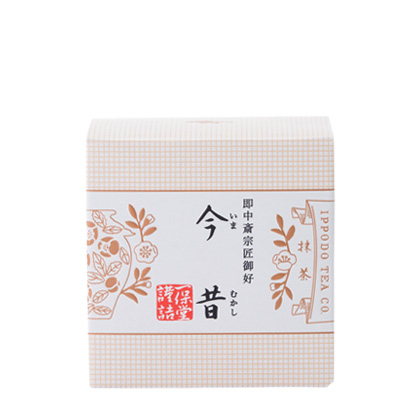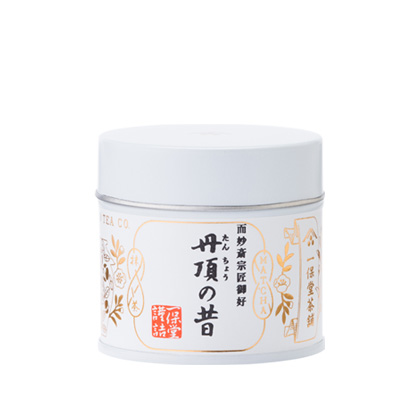I was recently in Japan with my family for my Japanese wedding ceremony, and after all the family craziness was done I finally had some time to dig into tea in Tokyo. I managed to go to three separate spots for tea and I made sure Ippodo was one of them for one simple reason–matcha.
History Steeped in Matcha
As of 2018, Ippodo is 301 years old! Yes, three whole centuries of selling quality Japanese tea. Founded in 1717 under the name Omiya, they quickly gained a reputation for quality tea that attracted royalty from the palace nearby in Kyoto. In 1846 they were renamed by a prince to Ippodo (一保堂, lit. “preserve one”) with the hope the shop would preserve its high quality taste and tea forever.
I chose Ippodo because I figured you don’t get to the place Ippodo’s at without being a beacon of quality and, perhaps more importantly, consistency. The way I looked at it, if I wanted to get a clear picture of what typical, high-quality Japanese matcha is supposed to be like, Ippodo was a great place to start.
Matcha in the Heart of Tokyo
Their shop in central Tokyo is beautiful. About 15 minutes on foot from the historic Tokyo Station, Ippodo fits right in amid a row of boutiques, both native and foreign. It’s all low light and dark, rich wood tones. The shop front looks small but there’s room for a tea bar, a tea room for drinking and brewing on your own, and even space for classes inside. As soon as I stepped in the door I made straight for the tea counter and began chatting with one of the workers about their matcha selection. I was looking for some shred of information or inside tip that would help me figure out which matcha I might like.
Their menu featured 8 matchas ranked from richest to lightest, with two “Kyoto exclusives” on the side. The woman behind the counter explained the “light” matchas would have less body and be more on the bitter side. The “rich” matchas would be full-bodied and packed with umami. That was helpful and all, but my matcha experience isn’t deep enough to match her explanations to past experience, so I had no choice but to open my wallet and go for it.
You Don’t Know Until You Try
I decided to go for a spread–three kinds of matcha at 20 grams each to get a sense of the breadth of Ippodo’s offerings. I picked matchas #1 (Ummon-no-Mukashi), #4 (Tancho-no-Mukashi), and #8 (Ima-Mukashi), ranked in order of richness and quality. At $1.00/gram for #1 versus $0.20/gram for #8, the price alone was a strong indicator of quality, but words and numbers don’t mean squat next to brewing and tasting a tea directly.
Armed with my three matchas and safely back home in California, it was time to taste test. I brewed and tasted in order from lowest to highest, so 8-4-1.
Read on below for my tasting notes.
Tasting Notes
Teas:
- Ummon-no-Mukashi (#1), Tancho-no-Mukashi (#4), and Ima-mukashi (#8).
Parameters:
- Temperature: 80C/175F
- Water: Filtered (PUR) tap, 60mL/2 oz
- Tea: 2 grams
- Whisk: 80-prong bamboo whisk (chasen)
- Preparation:
- Add powder to pre-heated tea bowl (chawan) along with a small amount of water. Smooth powder into paste with the whisk. Add remainder of water and whisk to smooth frothy completion, about 15-20 seconds.
Results:
Ima-Mukashi (#8)
Appearance:
- This tea was the “lightest” and least-expensive matcha on the menu, and it was pretty apparent as to why as soon as I scooped it out. The powder was pale, lacking the characteristic vibrant green of higher-quality matcha. The paste in the bowl was a light green and even the final froth had a bit of a pale cast, lacking the vibrant, emerald green of a better quality matcha.
Aroma:
- Basically none to speak of. I’ve found with richer, higher quality matchas, the aroma comes wafting out of the bowl as soon as powder touches water. This one had very little aroma to speak of during or after the whisking process.
Flavor & Texture:
- The liquor was thick and creamy but also chalky. I was surprised by this given that the tea appeared to be whisked fully and properly. It wasn’t unpleasant but it wasn’t particularly enjoyable either.
- The flavor was like bitter green vegetables but it was all on the tongue and left very little aroma in the nose or throat. This is what I believe it means to be a “light” matcha–crisp and bright but it doesn’t linger or last long after you swallow.
Final rating:
- Skip this tea and go one or two rungs up the quality ladder (see the menu picture above).
- It’s supposed to be beginner-friendly but I’m afraid if a beginner tried this they’d feel like matcha was just bitter without depth or complexity. That said, I do want to try this matcha again as “usu-cha” (“light tea”). I feel like a bit more volume of water, maybe an additional 30-60 mL/1-2 oz would thin it out enough to give it a more enjoyable bitterness and clear out the chalkiness. It may also be good for use in lattes.
Tanchou-no-Mukashi (#4)
Appearance:
- The powder had the bright, vibrant green that is characteristic of good matcha. I was excited to brew this up as soon as I scooped it out. Lovely, thick emerald froth after whisking.
Aroma:
- Stronger aroma than Ima-Mukashi, this one was bright green vegetal notes through and through during the whisk.
Flavor & Texture:
- Like a salty sea breeze blowing in off the ocean, the Tanchou-no-Mukashi was fresh, bright, and savory. Delightfully balanced and well-rounded, this matcha is solid. A sweet aroma fills the mouth and nose after swallowing, which lingers pleasantly for a while.
- Texture-wise it was smooth and crisp. Very pleasant to drink without any of the chalkiness evident in the Ima-Mukashi before it.
Final rating:
- Highly recommended as a very solid daily drinker. I also strongly recommend this tea with traditional tea sweets like wagashi. Next time I re-stock from Ippodo I’ll be ordering up a 40g can of this to keep on hand for sure.
Ummon-no-Mukashi (#1)
Appearance:
- Bright and vibrant green powder, deep emerald froth. Nothing markedly different from the TNM before it.
Aroma:
- The powder seemed to imply an almost chocolate sweetness but the whisked matcha was so bright and fragrant I felt like I had stuck my nose into a tea bush to smell the fresh leaves.
Flavor & Texture:
- This tea is complex. Seaweed, mowed grass, unsalted butter, the layers of flavor rolled over and overwhelmed my senses. After swallowing, a deep and abiding aroma filled my nose and throat. It was slightly sweet but shot through with umami that coated my whole mouth.
- The texture was surprisingly light, but still full-bodied. Even after swallowing I had the feeling of the tea on my tongue for quite some time. My mouth felt coated, like I had eaten some kind of matcha butter.
Final Rating:
- A truly impressive bowl of matcha but if you’re looking for a casual bowl to start your day, this isn’t it. This tea demands the drinker’s complete focus and attention. Don’t pair it with anything because it’s enough by itself. Reach for the Ummon-no-Mukashi if you want something that’s going to suck you in and take you on a ride. It’s no wonder this is Ippodo’s top-tier offering!
And the Winner Is…
The clear winner on taste and quality is #1, Ummon-no-Mukashi. It’s a tea that demands your attention and pulls you in with its depth and complexity. That said, I think #4, Tanchou-no-Mukashi, is a great daily drinker. Priced affordably with a lot of bang for your buck, I can see myself drinking this one consistently. #8 is a budget option. It’s not bad matcha, but you can get a lot more without spending a lot more by going a few rungs up the ladder.
Success Is A Warm Bowl of Ippodo Matcha
I wanted to dive into matcha and get a taste of everything Ippodo had on offer. Suffice to say, mission accomplished! In general this is a great way to learn about any kind of tea, and I now feel like I have a stronger grasp of the spectrum of experiences available within matcha.
I will definitely be going back to Ippodo. They have five more matchas on their menu–not to mention localized or seasonal offerings–that I want to try. I’d better get to drinking!










